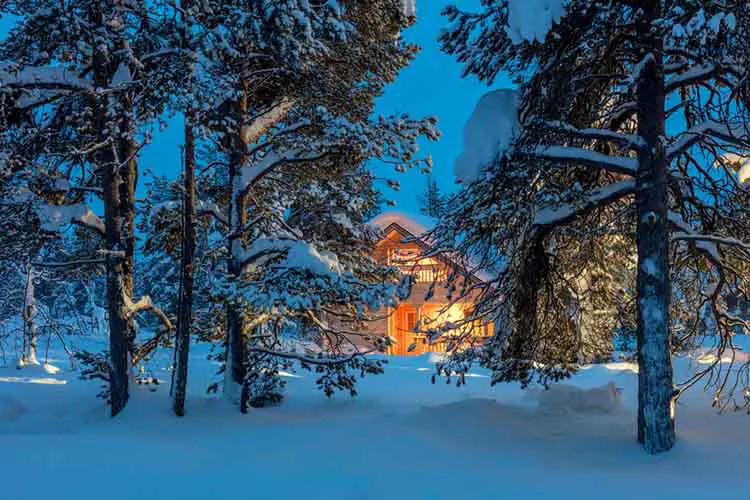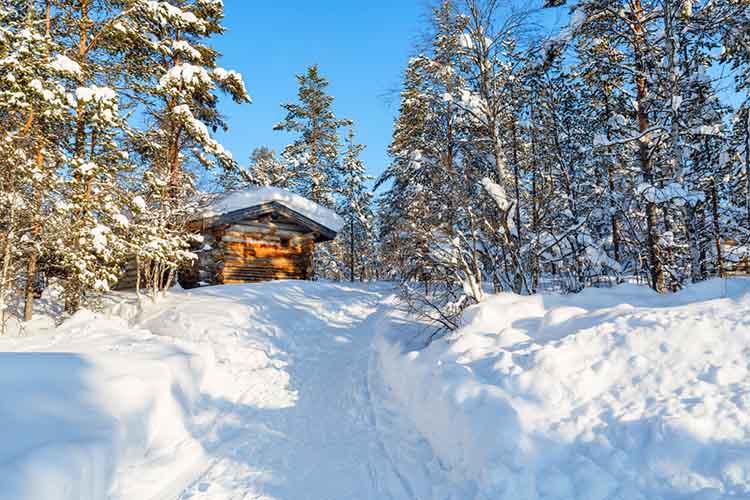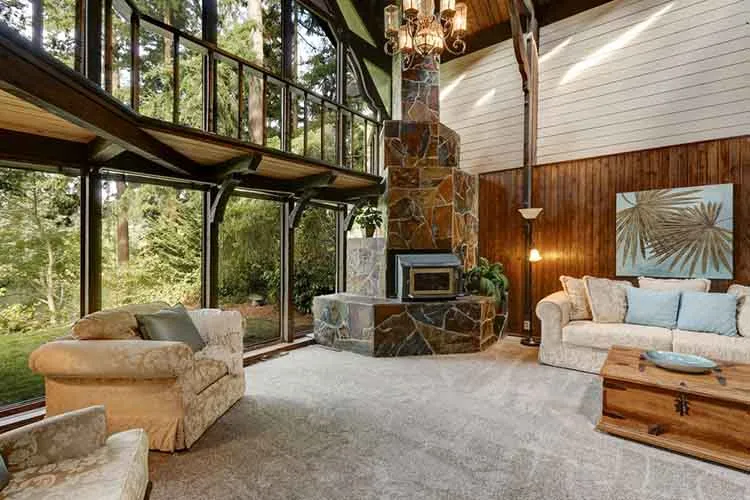With the hazy lazy days of summer turn into colder days and nights, it’s time to transition our cabins for the winter season. And sadly for some of us, it may mean less time at the cabin. If your cabin is more suited for three seasons than long cold winters, you might decide to shutter it for the winter season.
Winter weather conditions such as ice, snow, rain and wind can wreak havoc on your cabin. But with the right steps, you can ensure it’s kept safe and problem-free while you’re not using it. Whether you’re away all winter or for a part of it, there are a number of maintenance and safety precautions you’ll want to take care of before closing the doors for the season. Winter can be harsh on your cabin but there are steps you can take to help protect it.
Here is a handy checklist for closing the cabin for the winter season.

Exterior Checklist
- If your cabin is located on water, you’ll want to remove the dock and safely store it somewhere dry. Boats and other watercraft should also be stored. Check with your local marina if you need help winterizing or storing watercraft.
- Bring in other summer fun items like fire pits, hammocks, outdoor furniture, and lawn games and store them in a dry place. Ensure your fire pits are maintained properly.
- Clean gutters to remove any debris so rain and snow can move through the gutters in winter.
- Check roof for debris and any broken shingles and make any repairs as needed before the snow flies.
- Critter control – check roof and walls for any small openings that small animals could get into. If you have a chimney, you can cover with a chimney cap to keep unwanted critters out.
- Check windows for air leaks and cracks
- Store firewood away from cabin in dry storage – either a firewood storage shed or a simple tarp and bungee works as well.
- Fire prevention – in addition to storing fire wood, rake up leaves and yard debris and dispose of it.
- Trim trees as winter weather can cause dead branches or tree limbs to break off and damage your cabin.
Interior Checklist
10. Turn off heat – turn it to zero if you are planning to be gone for the whole winter or on low if you’re not sure. But if you’re turning your heat off completely, make sure you’re prepared to turn off water and drain pipes to avoid freezing.
11. Turn off water – if you’re planning to be gone for the whole winter, you’ll need to turn the main water valve and drain pipes to avoid frozen pipe disasters.
12. If your cabin has a fireplace or wood-burning stove make sure it’s properly maintained by cleaning out any ashes and properly disposing of them as well as having the chimney swept.
13. Unplug appliances – start with the kitchen and unplug large and small appliances and move through bedrooms and living areas and make sure everything is unplugged. If you leave any computers or other electronics in the cabin, make sure they’re unplugged as well.
14. Check smoke alarms and carbon monoxide detectors to ensure they are working properly.
15. Check Windows and Doors- look for cracks and holes in the windows and doors to make sure they are properly sealed for winter weather. You’ll want to check there are no air gaps for maximum energy efficiency. Fill any air gaps around the window with sealant and weather stripping as needed.
16. Empty cupboards and refrigerator to make sure you don’t attract insects, rodents or other unwanted critters. Tip: leave the refrigerator door open a crack to let it breathe so it doesn’t smell musty when you open it back up. You can store dry goods in air tight containers but if you’re not heating your cabin at all, you’ll want to remove all canned goods that can freeze.
17. It’s always a good idea to arrange a caretaker or a trusted friend to look in on your cabin over the winter and know ahead of time who to call locally if you have any emergencies or repairs that come up over the winter .
Having a checklist for the exterior and interior of your cabin helps to make the transition from fall to winter easier whether you are completely closing your cabin for the season or using it less in winter. Once you get in the swing of closing and opening the cabin, it is pretty simple. You can also hire someone locally to help you with the checklist and be available should any repairs or issues arise.
Once your cabin is properly closed for the winter, you should be able to sleep soundly until it’s time to reopen and enjoy your cabin for summer.
You may find you’re dreaming about your cabin all winter and wanting to use it for winter adventures – from Nordic skiing or snow shoeing to building snow forts with the kids (or just cozying up with some hot chocolate). If so, you might want to explore the costs and steps needed to winterize your cabin and take it from a summer place to a year round escape for future years.
In the meantime, ensure that your cabin is properly maintained if shuttered during the winter months so you can enjoy it when summer rolls around.


